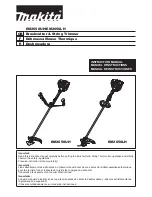
®
Charge/Discharge Circuit
Equipment Setup
4
To Connect an External Power Supply to the Charge/Discharge Circuit
•
Connect the cord from the positive terminal on the power supply to the positive “Power(+)” connector on the
circuit board.
•
Connect the cord from the negative terminal on the power supply to the negative “Power(-)” connector on
the circuit board.
CAUTION: When using an external power supply, do not exceed a voltage of 3 volts for the bulbs or 5 volts for
the capacitor.
Also, always connect the positive lead from an external power supply to a positive (+) connector and the negative
cord to a designated negative (-) connector on the circuit board. Reversing positive and negative cord connec-
tions from an external power source may permanently damage the capacitor.
To Connect a PS-2115 PASPORT Voltage-Current Sensor to the Charge/Discharge Circuit
•
To measure voltage: Plug the positive (+ red) voltage lead from the sensor into a positive connector on the
circuit board. Plug the negative (- black) voltage lead into a negative connector on the circuit board. (Note:
The connection of the leads from the sensor must be in parallel with a component of the circuit.)
•
To measure current: Plug banana plug patch cords into the positive (+) and negative (-) banana plug ports on
the Voltage-Current Sensor. Connect the Voltage-Current Sensor in series with the Charge/Discharge Cir-
cuit. For example, plug the patch cord from the positive banana plug port on the sensor into the “Power (+)”
connector on the Charge/Discharge Circuit board. Plug the other patch cord from the sensor into the positive
connector for the capacitor.
To Connect Other Devices to the Charge/Discharge Circuit
Two empty slot springs are available for adding (or testing) other types of components with the circuit board.
Suggested Applications
•
Demonstrating Ohm’s Law, the relationship of current to voltage and resistance in a direct current circuit.
•
Comparing the voltage-current curve for an ohmic resistor to the voltage-current curve for a light bulb
(which may be nonlinear).
•
Measuring the charge-discharge of the capacitor.
•
Comparing battery discharge rates for different types of rechargeable batteries (not included).
WARNING
: To avoid shock, never place water or a wet hand in the path of the circuit. Always con-
nect an external power supply to a properly grounded electrical outlet. Do not get the board or any
of its components wet. Do not place the board near water. Follow standard electrical safety precau-
tions, and treat the Charge/Discharge Circuit like any other conductor.
























